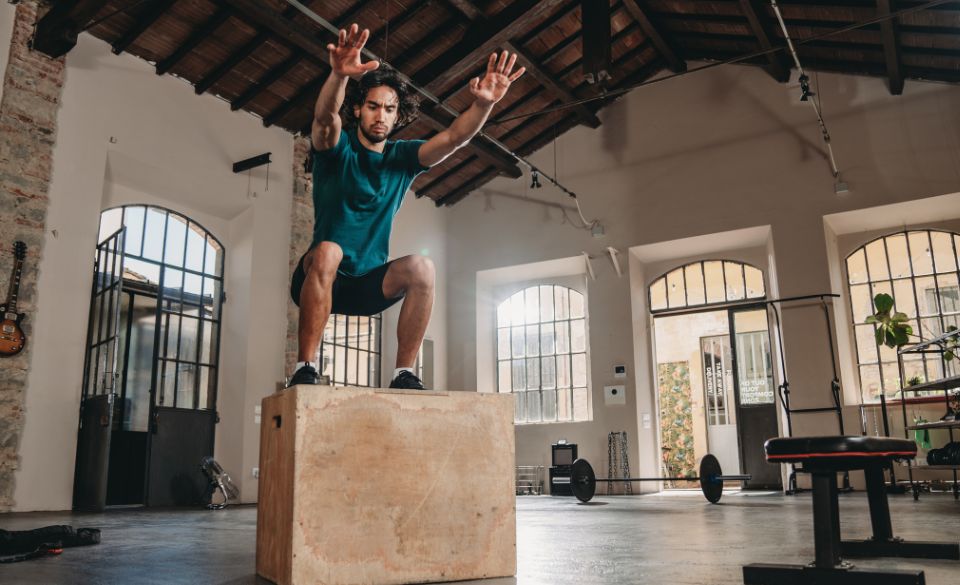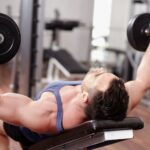
How to Get Stronger Legs for Cycling: 10 Leg Workouts for Cyclists
Page Contents
- 1. Squats: The Foundation of Leg Strength
- 2. Lunges: Balancing Leg Power
- 3. Leg Press: Targeting Quadriceps and Glutes
- 4. Deadlifts: Strengthening the Posterior Chain
- 5. Step-Ups: Building Pedal-Pushing Power
- 6. Cycling-Specific Drills: Mimicking the Real Thing
- 7. Wall Sits: Building Endurance
- 8. Hamstring Curls: Balancing Front and Back
- 9. Box Jumps: Explosive Power
- 10. Yoga for Cyclists: Flexibility and Strength
- Conclusion: Pedal Your Way to Stronger Legs
Cycling is not just a means of transportation or a leisurely activity; it’s a sport that demands power, endurance, and, above all, strong legs. Whether you’re a seasoned cyclist or just starting on your biking journey, the quest for stronger legs is a universal pursuit. In this blog post, we’ll explore 10 leg workouts tailored specifically for cyclists, designed to enhance your pedaling prowess and elevate your cycling experience.
1. Squats: The Foundation of Leg Strength
Squats are the cornerstone of leg strength training. They engage your quadriceps, hamstrings, glutes, and calves, all of which are essential for powerful pedal strokes.
How to do it: Stand with your feet shoulder-width apart, lower your body as if sitting in an invisible chair, keeping your back straight and your knees aligned with your toes. Rise back up to a standing position. Start with bodyweight squats and gradually add weights as you progress.
Study: A study published in the “Journal of Sports Science & Medicine” found that squat exercises significantly improved cycling performance by enhancing leg strength and power.
2. Lunges: Balancing Leg Power
Lunges are fantastic for building strength in each leg individually, addressing any imbalances that may affect your cycling performance.
How to do it: Take a step forward with one leg, lowering your body until both knees are bent at 90-degree angles. Push off your front foot to return to the starting position. Repeat with the other leg. You can perform stationary lunges or walking lunges.
Study: Research published in the “European Journal of Applied Physiology” highlighted the importance of lunges in improving leg strength and balance, crucial for cyclists.
3. Leg Press: Targeting Quadriceps and Glutes
The leg press machine is a versatile tool for targeting your quadriceps and glutes, both crucial for powerful cycling.
How to do it: Sit in the leg press machine with your feet hip-width apart on the platform. Push the platform away from your body, extending your knees. Slowly return to the starting position. Adjust the weight to match your fitness level.
Study: A study published in the “Journal of Strength and Conditioning Research” demonstrated that leg press exercises significantly increased quadriceps strength, translating to improved cycling performance.
4. Deadlifts: Strengthening the Posterior Chain
Deadlifts work wonders for the posterior chain, including the hamstrings and lower back, which play a significant role in stabilizing your body during cycling.
How to do it: Stand with your feet hip-width apart, a barbell in front of you. Bend at your hips and knees to lower your body and grab the bar with an overhand grip. Keeping your back straight, lift the barbell by extending your hips and knees. Lower it back down with control.
Study: Research published in the “Journal of Strength and Conditioning Research” found that deadlifts significantly increased hamstring and lower back strength, contributing to improved cycling performance.
5. Step-Ups: Building Pedal-Pushing Power
Step-ups mimic the motion of cycling and help build the power needed for those uphill battles.
How to do it: Stand in front of a bench or step with a dumbbell in each hand. Step onto the bench with one foot, fully extending your knee and hip. Step down and repeat with the other foot.
Study: A study published in the “International Journal of Sports Physiology and Performance” showed that step-up exercises improved leg strength and power, particularly beneficial for uphill cycling.
6. Cycling-Specific Drills: Mimicking the Real Thing
Incorporating drills that simulate cycling movements can be incredibly beneficial. These drills improve muscle memory and enhance your pedaling technique.
How to do it: Set up your bike on a stationary trainer or use a spin bike. Practice high-cadence pedaling (90-100 RPM) for intervals of 30 seconds to 2 minutes. This mimics the quick turnover required in cycling and can be highly effective.
Study: A study in the “International Journal of Sports Physiology and Performance” demonstrated that cycling-specific drills significantly improved pedaling efficiency and power output.
7. Wall Sits: Building Endurance
Wall sits are excellent for building endurance in your quadriceps, which is crucial for maintaining a strong pedal stroke over long distances.
How to do it: Stand with your back against a wall and your feet shoulder-width apart. Lower your body by bending your knees until your thighs are parallel to the ground. Hold this position for as long as you can, aiming to increase your time with each session.
Study: Research published in the “Journal of Strength and Conditioning Research” found that wall sits improved quadriceps endurance, contributing to enhanced cycling performance during prolonged rides.
8. Hamstring Curls: Balancing Front and Back
While many leg workouts focus on the front of the legs, it’s essential to balance your leg strength by targeting the hamstrings.
How to do it: Use a hamstring curl machine at the gym, or perform standing hamstring curls with a resistance band. This exercise helps prevent muscle imbalances and reduces the risk of injury.
Study: A study in the “European Journal of Applied Physiology” emphasized the importance of hamstring exercises in preventing muscle imbalances and improving overall leg strength for cyclists.
9. Box Jumps: Explosive Power
Box jumps are fantastic for developing explosive power in your legs, which can translate into stronger pedal strokes, especially during sprints or hill climbs.
How to do it: Stand in front of a sturdy box or platform. Jump onto the box, landing softly with your knees slightly bent. Step back down and repeat. Start with a lower box height and gradually increase it as you become more proficient.
Study: Research published in the “Journal of Strength and Conditioning Research” demonstrated that box jumps significantly improved lower body power and explosiveness, essential for sprinting in cycling.
10. Yoga for Cyclists: Flexibility and Strength
Yoga may not involve traditional weightlifting, but it’s an excellent way to improve flexibility, balance, and strength—all of which contribute to better cycling performance.
How to do it: Incorporate yoga sessions into your weekly routine, focusing on poses that stretch and strengthen the legs, such as Warrior I and II, Downward Dog, and Pigeon Pose. Yoga also aids in recovery and can help prevent injuries.
Study: A study in the “Journal of Strength and Conditioning Research” highlighted the positive effects of yoga on flexibility, balance, and overall strength for cyclists.
Conclusion: Pedal Your Way to Stronger Legs
Strong legs are the backbone of successful cycling. Whether you’re a dedicated road cyclist, a mountain biking enthusiast, or simply enjoy leisurely rides, these leg workouts tailored for cyclists can help you unlock your full potential on the pedals. Mix and match these exercises, progressively increase the intensity, and stay consistent with your training. As your legs grow stronger, you’ll not only conquer challenging terrains with ease but also enjoy the countless physical and mental benefits that cycling has to offer.



